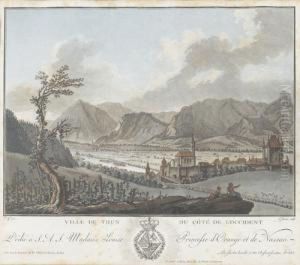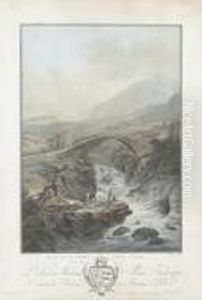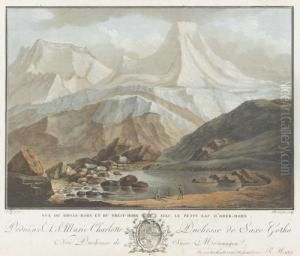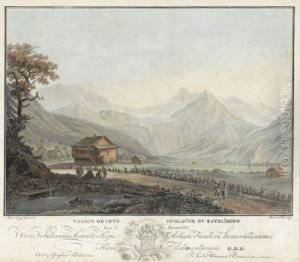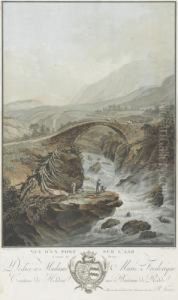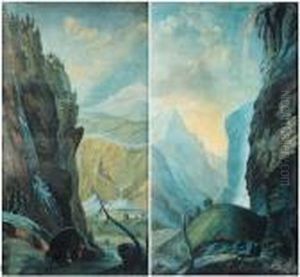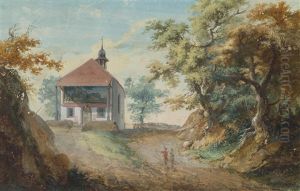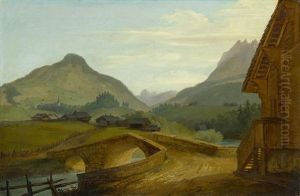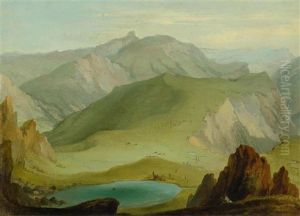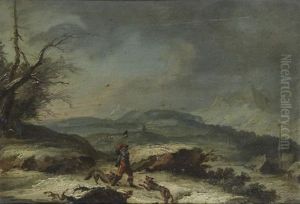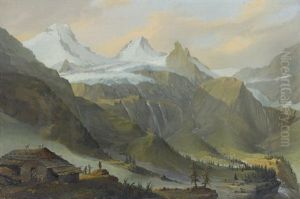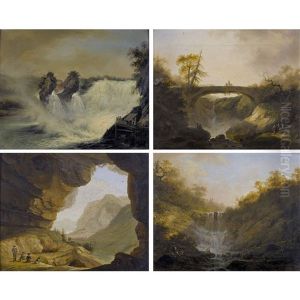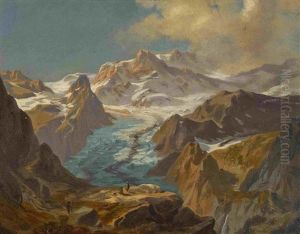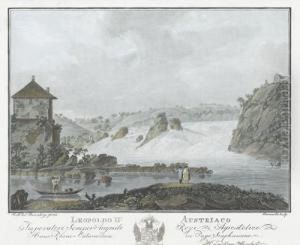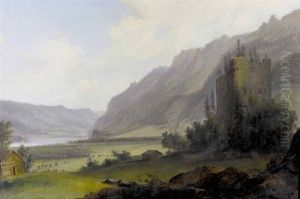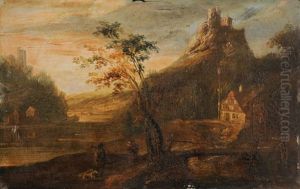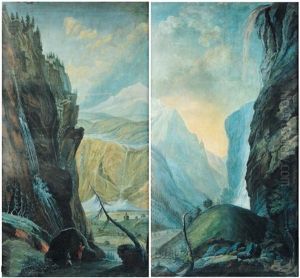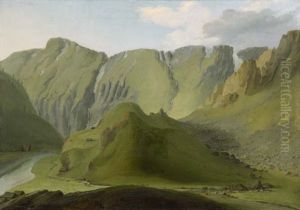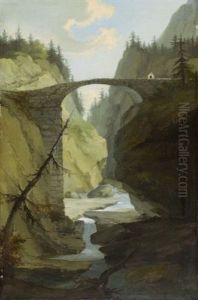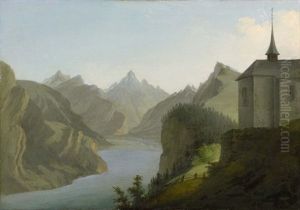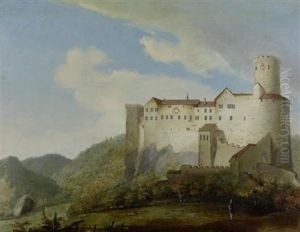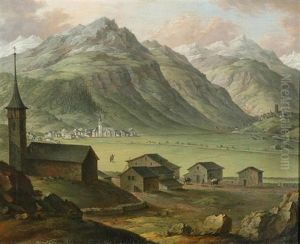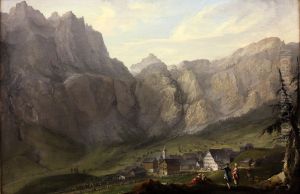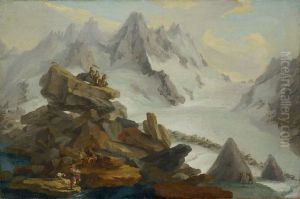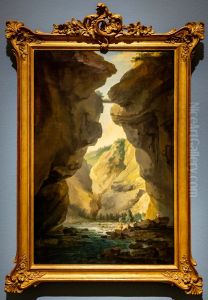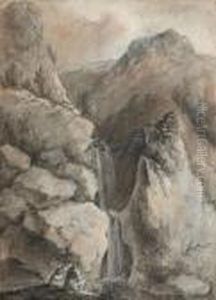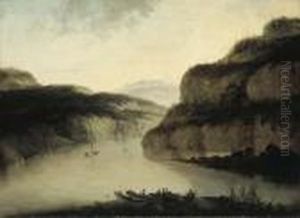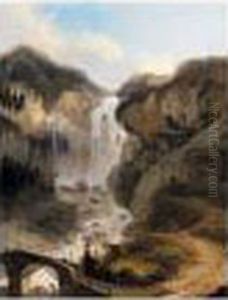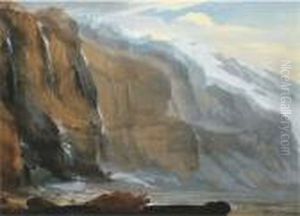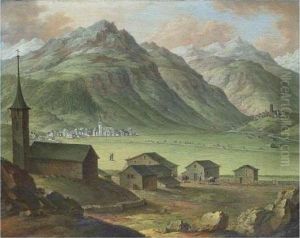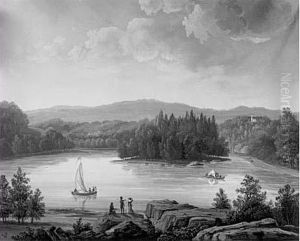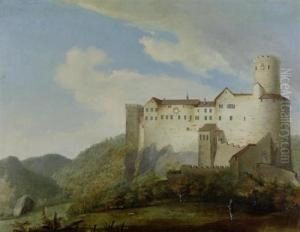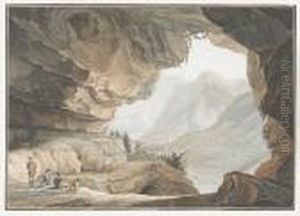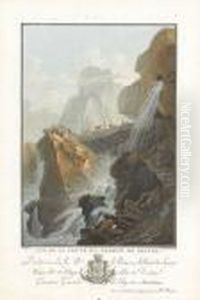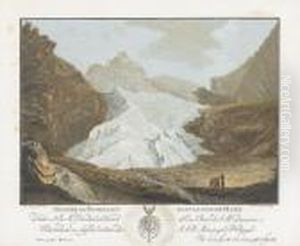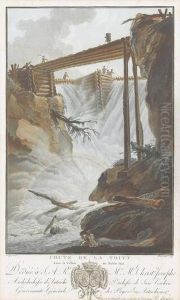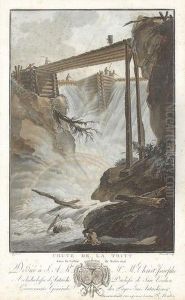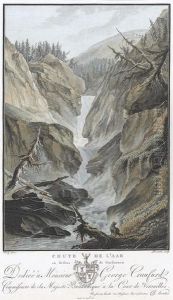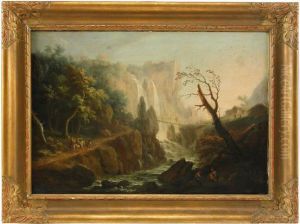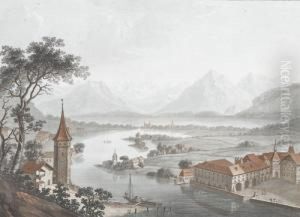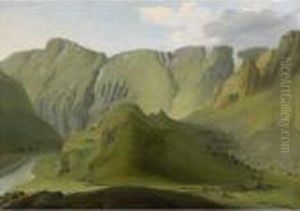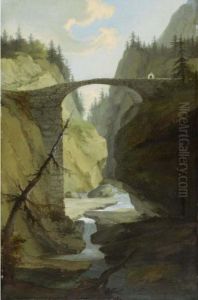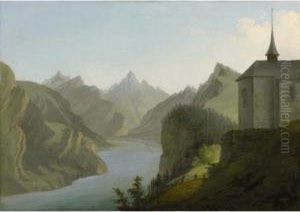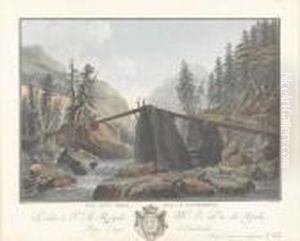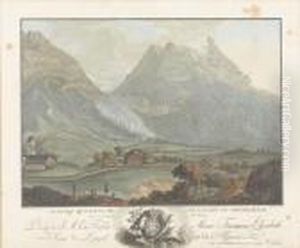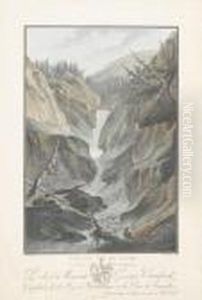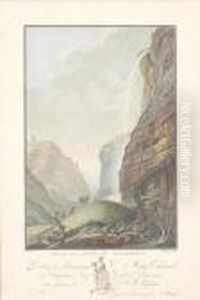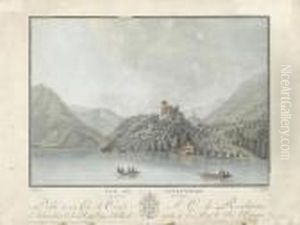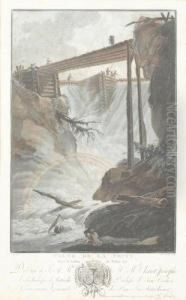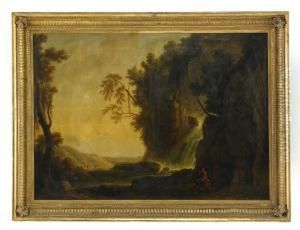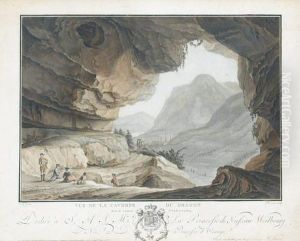Caspar Wolf Paintings
Caspar Wolf was a Swiss painter, born on May 3, 1735, in Muri, Switzerland. He is best known for his dramatic and sublime depictions of the Swiss Alps and is considered a pioneering figure in Alpine landscape painting during the 18th century.
Wolf's early education in art began in his hometown, but he soon moved to Basel to further his training. He studied there under the tutelage of Samuel Hieronymus Grimm, a Swiss painter known for his works in watercolor. In 1759, Wolf continued his journey to improve his skills and moved to Paris, where he was exposed to the works of the French masters and was influenced by the burgeoning Romantic movement. His time in Paris was instrumental in shaping his later artistic style, which combined detailed realism with a sense of the sublime found in nature.
The artist returned to Switzerland in 1762 and began to focus on landscape painting. He received a significant commission from the Bernese councilor and naturalist Abraham Wagner, which entailed a series of over 150 paintings capturing the grandeur of the Swiss Alps. This project, known as the 'Swiss Alpine Club' series, solidified Wolf's reputation as a master of Alpine landscapes and contributed to the development of Swiss national identity by celebrating the natural beauty of the country.
Caspar Wolf's works are characterized by a strong sense of atmosphere and lighting, often depicting the raw and untamed aspects of the Alpine environment. His paintings showcase towering cliffs, dramatic waterfalls, and the vastness of the mountains, with a meticulous attention to geological detail and the effects of light and weather. His approach was both scientific and artistic, as he often accompanied researchers on expeditions to capture the landscapes accurately.
Despite his contributions to landscape painting and the cultural heritage of Switzerland, Wolf struggled with financial difficulties throughout his life. He died on October 6, 1783, in Heidelberg, Germany. Today, Wolf's legacy is recognized, and his paintings are held in high regard, with many of them displayed in museums across Europe, especially in Switzerland, where they continue to inspire a sense of national pride and an appreciation for the country's natural landscapes.
